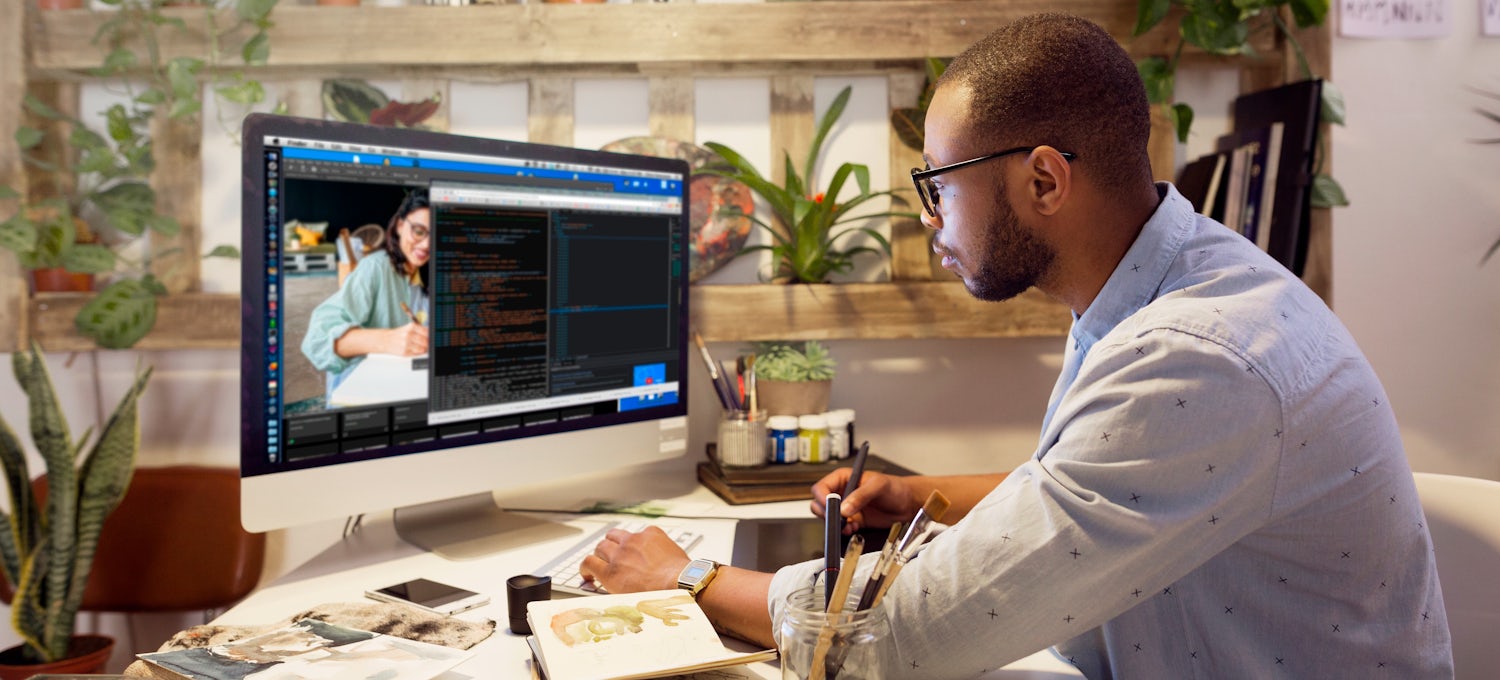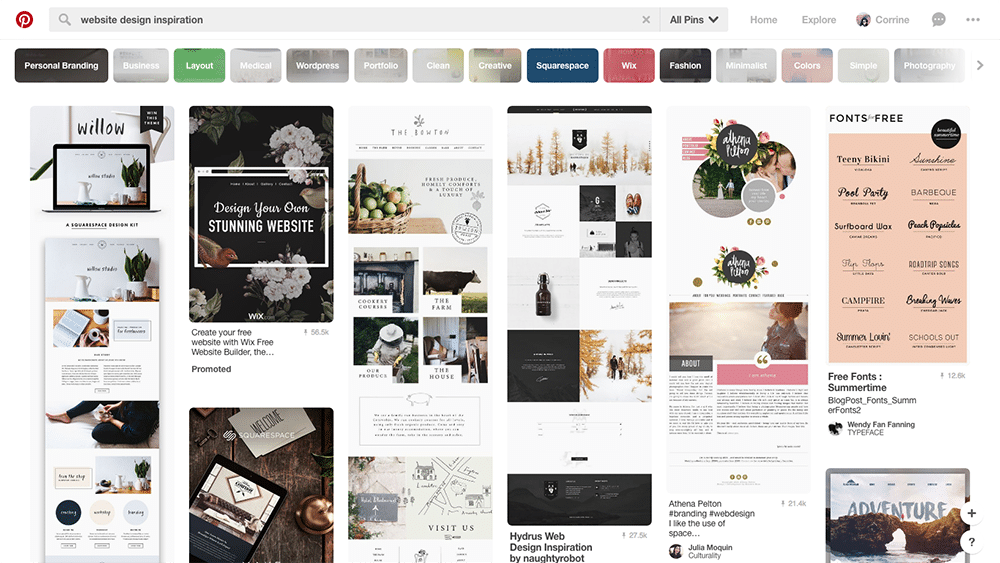The Comprehensive Guide to Crafting Aesthetically Appealing and Functional Internet Style That Meets Individual Requirements
In today's digital landscape, the relevance of crafting web designs that are both functional and visually appealing can not be overemphasized. By prioritizing user-centered style concepts, designers can develop experiences that not only attract but additionally keep user rate of interest - web design.
Recognizing User-Centered Design
At the heart of reliable website design exists the concept of user-centered layout, a viewpoint that focuses on the requirements, preferences, and actions of customers throughout the growth procedure. This strategy includes detailed study to recognize the target market, guaranteeing that the end product reverberates with its desired users. By integrating customer feedback at every stage, developers can develop user interfaces that are not only visually enticing however likewise functional and instinctive.
User-centered style stresses compassion, needing developers to step into the customers' shoes and consider their viewpoints. Strategies such as customer characters, journey mapping, and use screening are utilized to recognize pain points and possibilities for enhancement. This repetitive process allows for continuous refinement, as designers adapt to developing customer demands and technical improvements.
Including user-centered style leads to enhanced individual satisfaction and interaction, eventually leading to higher conversion prices and brand loyalty. It cultivates a joint atmosphere where stakeholders, including users, developers, and developers, work with each other to achieve a common vision. By placing users at the leading edge of the layout procedure, organizations can develop internet sites that not only fulfill service purposes but additionally provide satisfying and meaningful experiences for users.
Trick Principles of Visual Layout
Effective aesthetic style functions as the structure for developing straightforward and appealing web sites. It includes numerous vital concepts that lead developers in crafting aesthetically pleasing and functional user interfaces.
First, equilibrium plays an important duty in attaining aesthetic harmony. Developers need to distribute elements uniformly throughout the design to avoid overwhelming customers. This can be achieved through symmetrical or asymmetrical design methods.
Next, contrast boosts readability and accentuates essential components. By utilizing differing sizes, forms, or shades, developers can develop centerpieces that direct customers with the content.
Furthermore, alignment is necessary for arranging details. Regular alignment of text and photos promotes a clean layout, boosting overall navigating and individual experience.
Closeness likewise contributes to aesthetic quality. Grouping related things with each other help users in understanding the partnership in between various elements, making the interface extra instinctive.
Finally, consistency in layout aspects, such as styles, font styles, and colors, reinforces brand name identification and assists individuals navigate the website a lot more easily. By incorporating these crucial principles of aesthetic style, web designers can develop interfaces that are not only visually enticing however additionally practical and user-centered.
Value of Responsive Layout
Responsive design is a vital aspect of modern-day web growth, ensuring that websites work seamlessly across a variety of tools and display dimensions. As the internet landscape evolves, the diversity of devicesâEUR" varying from smart devices to tablet computers and desktop computersâEUR" demands a design approach that suits all customers.
Implementing receptive style permits a flexible layout that instantly adapts based on the individual's display dimensions. This versatility not just boosts ease of access but also enhances usability, as index users can navigate and communicate with the site effortlessly, no matter of their tool.

In addition, responsive style lowers the requirement for maintaining multiple versions of an internet site, enhancing updates and material administration. This performance converts right into cost savings and an extra natural brand experience across systems.
Enhancing Individual Experience
Customer experience (UX) is a pivotal part of internet style, influencing how visitors communicate with a web site and regard its value. A well-crafted UX ensures that individuals can navigate with ease, helpful site find info conveniently, and accomplish their objectives successfully. The layout has to consider the customer's journey, from the minute they land on the site to the completion of their preferred activity, whether that be purchasing, authorizing up for a newsletter, or accessing information.
Crucial element that enhance UX include clear navigation, responsive layouts, and engaging aesthetic content. Uniformity in style aspects such as buttons, typefaces, and shades fosters knowledge, making the web site feel cohesive. Additionally, optimizing load times is critical; individuals are much less likely to remain on a site that is slow-moving to react.

Testing and Repeating Styles
Checking and iterating styles are fundamental procedures that comply with the first production of a site, making sure that the user experience stays at the forefront of any type of changes. These stages include gathering customer responses, evaluating style performance, and making informed modifications to improve use and involvement.
Reliable testing can take different kinds, including use screening, A/B testing, and user studies. Use screening allows designers to observe actual customers as they connect with the site, recognizing pain points and areas for renovation - web design. A/B screening, on the various other hand, compares two variations of a style aspect to determine which performs much better, giving quantifiable information to overview choices. Individual surveys can use qualitative insights, catching customer views and preferences.
As soon as screening is click for more finished, the iteration stage begins. This includes refining the layout based on the gathered data, prioritizing adjustments that straighten with individual needs and business goals. Constant model promotes an adaptive design approach, where the internet site advances in feedback to individual actions and responses. By dedicating to extensive screening and version, designers can produce an internet site that not only meets aesthetic standards but also supplies a enjoyable and seamless individual experience.

Final Thought
To conclude, effective web design requires the integration of user-centered principles, crucial aesthetic style elements, and responsive frameworks to create engaging user interfaces. By prioritizing individual needs and carrying out constant testing and model, developers can fine-tune their productions to boost total satisfaction. The commitment to these methods not just fosters an aesthetically appealing aesthetic yet likewise guarantees performance throughout diverse tools, ultimately adding to a positive user experience and enhanced engagement.
By focusing on user-centered style concepts, developers can create experiences that not just bring in however additionally maintain individual interest.At the heart of efficient internet layout lies the principle of user-centered style, an approach that focuses on the needs, choices, and behaviors of users throughout the advancement procedure. By putting customers at the leading edge of the style procedure, companies can create sites that not only satisfy company objectives but likewise give rewarding and meaningful experiences for customers.
By prioritizing individual requirements and preferences, internet developers can create experiences that are not only aesthetically appealing however additionally useful, inevitably fostering user complete satisfaction and loyalty.
User surveys can supply qualitative understandings, catching individual sentiments and preferences.
Comments on “Exactly how to Optimize Your Site's Efficiency with Advanced Web Design Methods”